“Life is like a permanent holiday for you, isn’t it?” is a pretty typical comment that the guides might hear when they’re leading a gravel riding holiday. From the outside their life might look pretty idyllic - being paid to ride their gravel bike somewhere beautiful probably sounds like a dream job. But dig beneath the surface and it might all start to look like slightly harder work than you first considered. Olly heads out into the rain to decide whether he fancies a mid-life career change.
“Hole…….hole………hole…..” shouted Francis as we rode along the forest road, darkness encroaching on us from all sides. Although the brutal early morning headwind had now faded away, squally gusts of rain had been peppering us for the last hour. I glanced down at my bike computer where I’d been tracking the distance remaining to ride and give everyone an update. “10kms to go”.
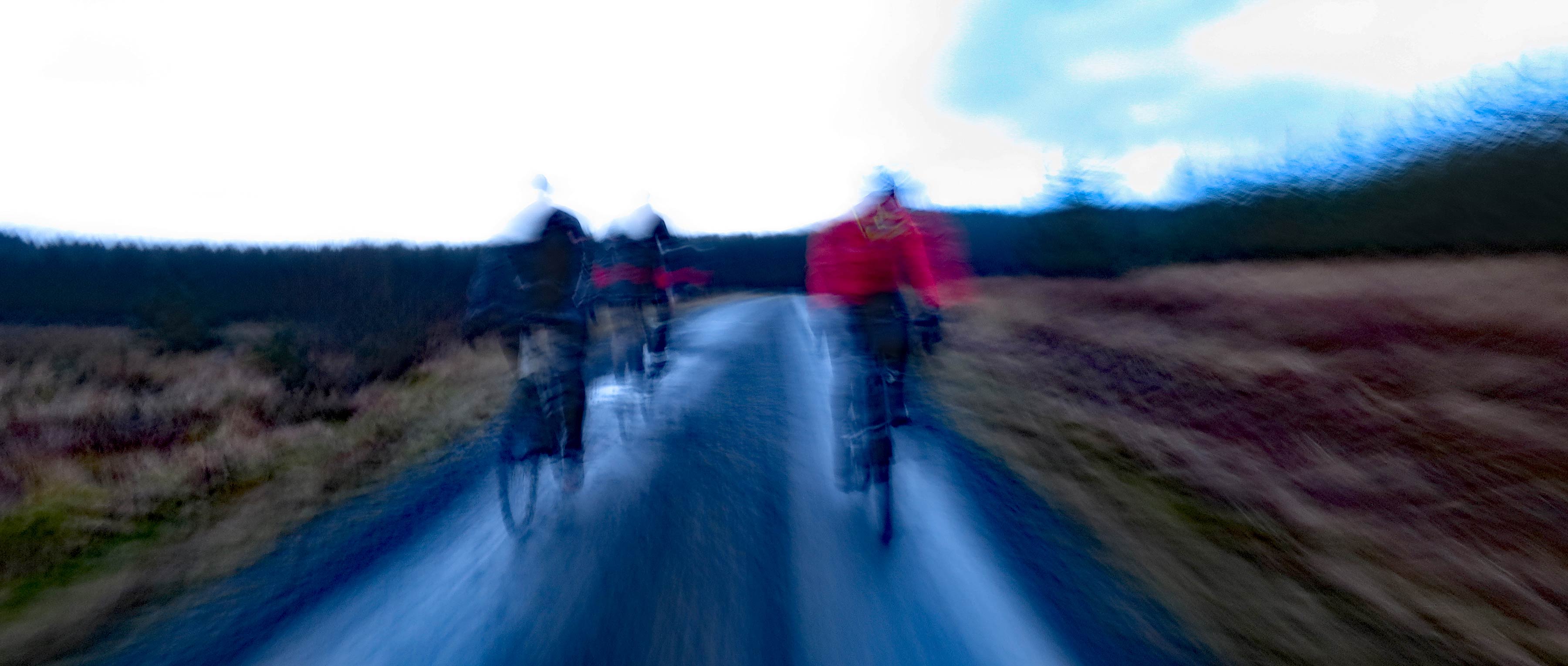
We had set off a little after 9am and it was now gone 6pm. It wasn't fully dark yet, but the constant sweep of rain clouds was bleeding the available light out of the evening sky. Francis and I had lights fitted to our bikes, but our ride buddies didn’t, as they thought we would have finished riding hours ago so we shouldn’t have needed them. Francis was calling out the trail hazards, in this case large water-filled potholes, so that we could all make it safely back to the carpark where we started the ride.
We’re so used to the football stadium-esque intensity of modern bike lights on our weekly nightriding sessions, that having to ride without the normal clarity is actually quite a buzz. You feel things as much as you see them. Your reactions are honed, you rely on instinct and survival mode as much as your vision. It was a useful reminder of the potential for winter rides to turn epic in this part of the world and the reason why cycling guides carry so much "just-in-case" kit with them. If a ride goes wrong out here, it might be a while before anyone came to help rescue you.
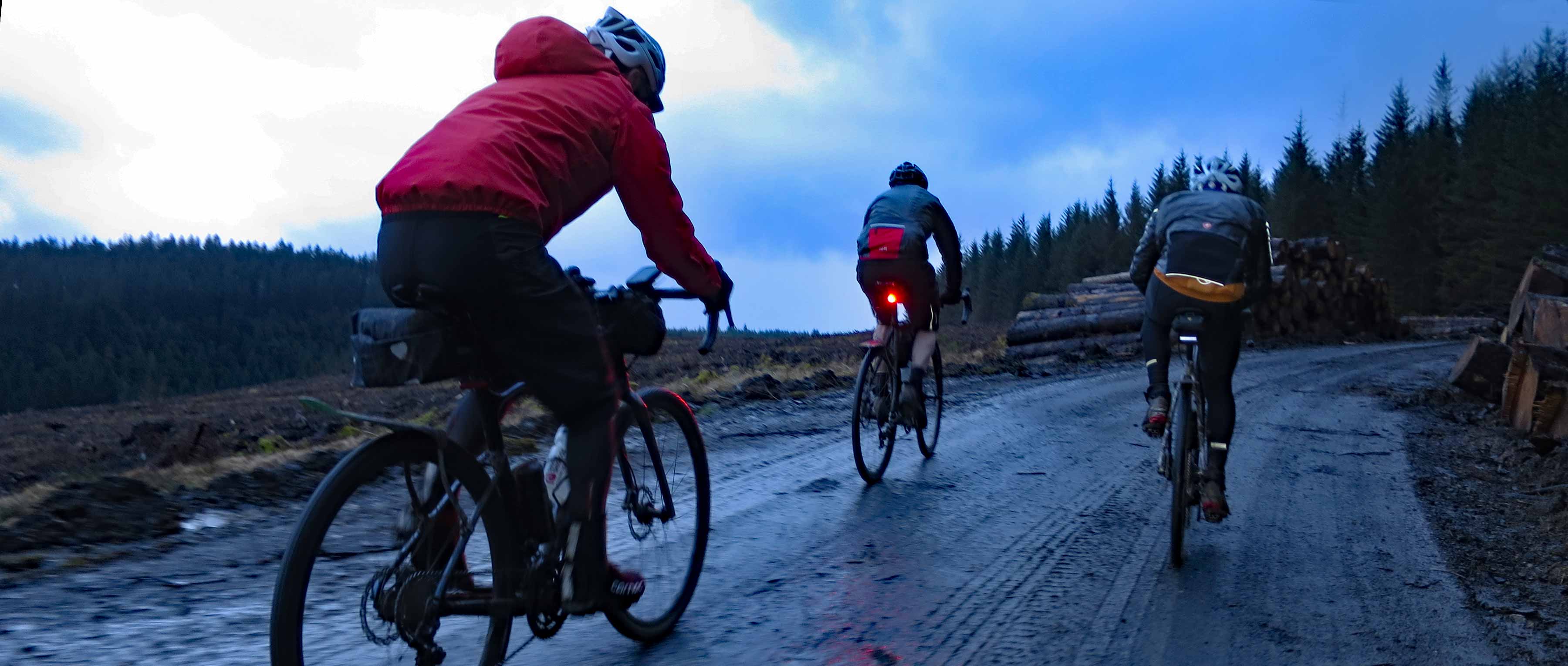
Much of the English/Scottish border is swathed in vast stretches of pine plantation making up Kielder Forest. While this monoculture is ecologically questionable, it actually provides the perfect canvas for big days out on a gravel bike. Vast amounts of mainly traffic-free gravel roads, perfectly maintained by the Forestry Commission offer the closest riding experience that northern UK-based riders can get to the Strada Bianche of Tuscany. Unfortunately, the seemingly never-ending winter this year means the forest roads when we ride them are more like Strada Grigio or Strada Marrone. Come the summer though and they will have shed their winter coat to offer the perfect fast-rolling, hardpacked surface that makes gravel riding here so fun. Or so Francis hopes.

The reason we were spending a cold, wet, blustery day in late March gravel riding into the gloaming was that Francis works as a professional cycling guide for local company Saddle Skedaddle and he had been tasked with devising an itinerary for a new gravel riding holiday which they are going to start running later this year. Although he did the initial planning for the route using a combination of digital mapping, aerial photographs and feedback from local experts, nothing beats actually putting tyres on the ground.
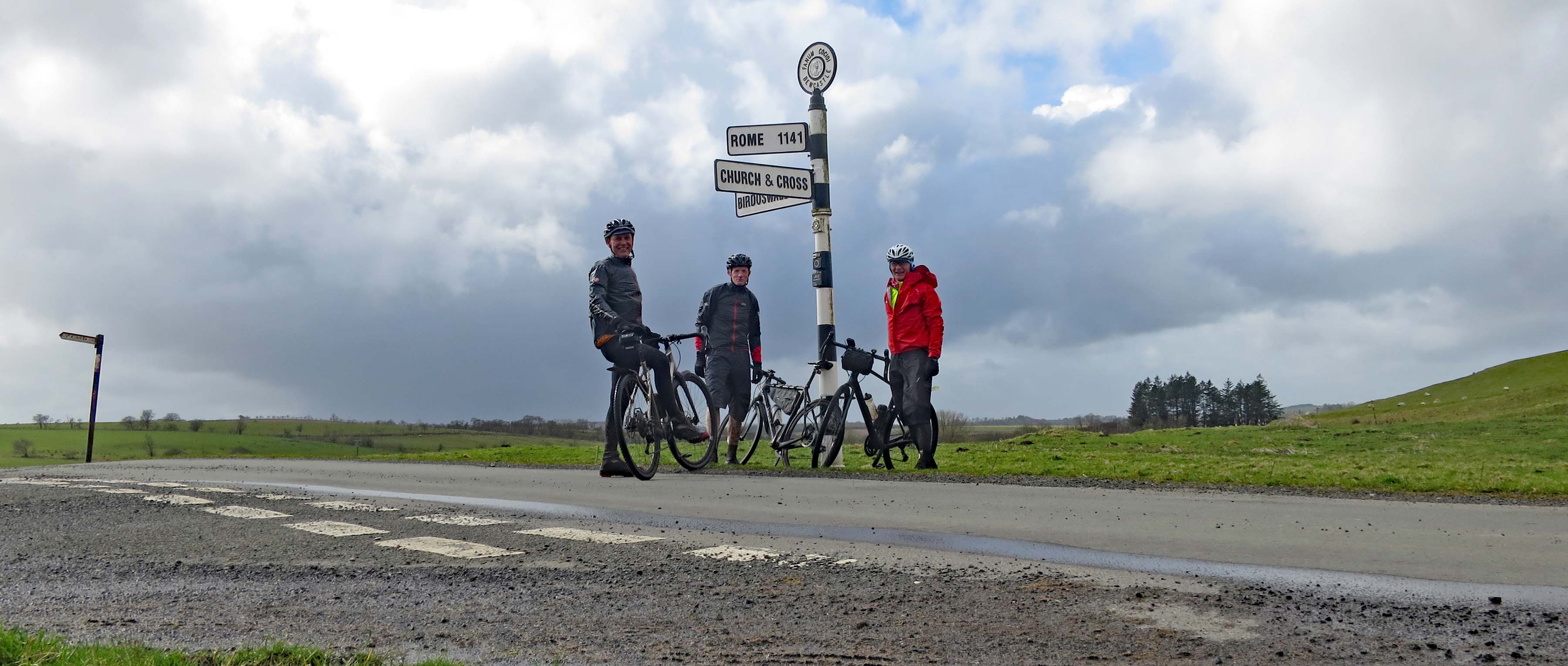
Helping set-up new trips is generally something only the “time-served” guides get asked to do as it requires a very specific skillset to do it properly. The actual route is only part of the conundrum of designing a perfect gravel riding holiday. You also have to think about all the related stuff – accommodation options, where to have lunch, access & parking for the support vehicle, emergency evacuation options, viewpoints for those shareable images that Skedaddle hope their customers want to take home as souvenirs. Then you have to consider potential trail conditions for the time of year that you want to run the trip, negotiate access with the different local landowners, think about the location of appropriate facilities such as bike shops and hospitals. The list of requirements goes on and on.

“I'm planning to do parts of a couple of reccies rolled into one this Friday if anyone wants to come on a ride to Scotland? It's 115km with 1500m ascent” said Francis’ message to our Friday gravel group. We’d all ridden in Kielder before so knew what to expect. We had also all checked out the weather forecast (cold, wet, windy) so knew it would be a tough day out on the bike. But we all also said yes :-) Our aim for the ride was to essentially fit two days riding into one and test out the different route options that Francis was considering adding into Skedaddle’s new Northumberland gravel trip.
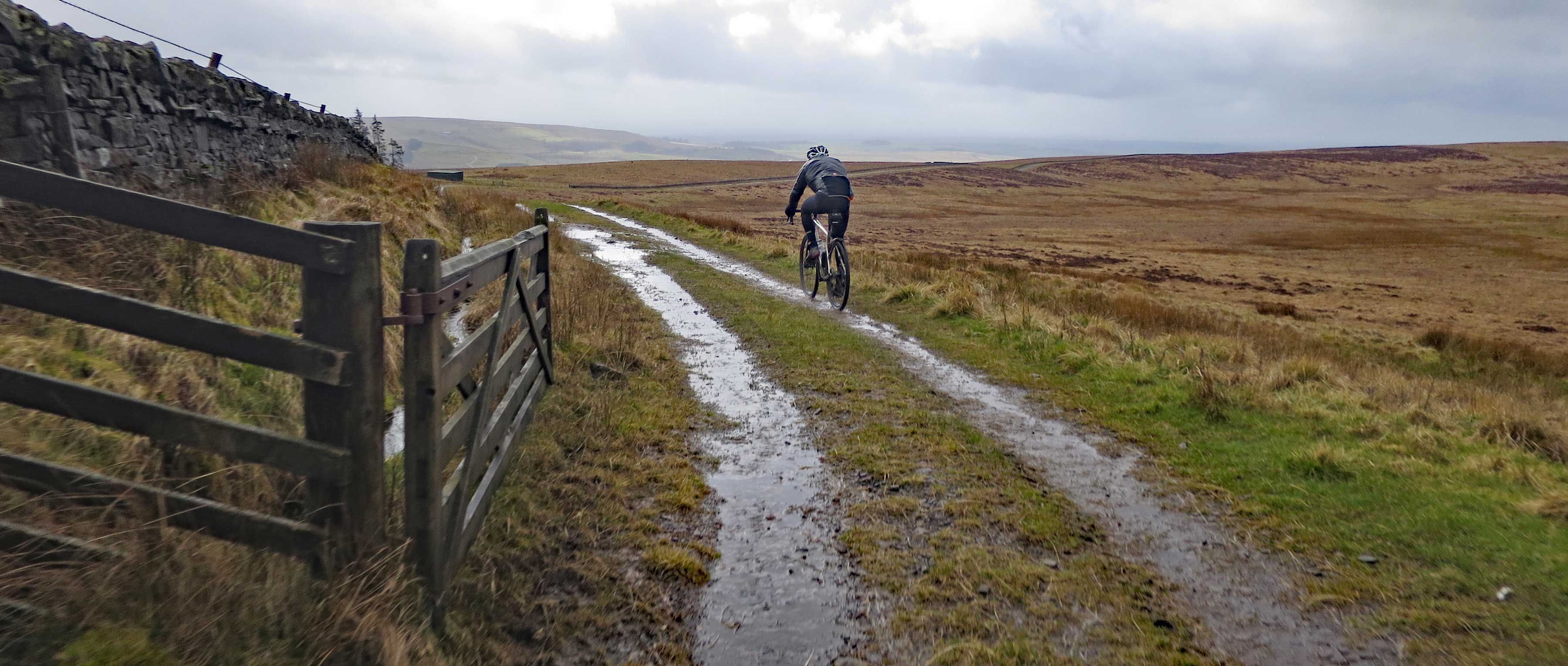
Our reccie route started off the beaten track near the south-eastern corner of Kielder Forest but saw us us heading north-west (into a howling gale) and then out of the forest en-route to the Scottish border. Lunch was to be in the border town of Newcastleton. The plan after lunch was to use some of the network of local XC MTB trails to take us back over a prominent ridge and down to Kielder’s most famous location, the 200 billion litre capacity Kielder Reservoir. A final climb back through the forest would see us safely back to our start point. Along the way we were going to be testing a number of rights of way and forest tracks that Francis had identified on the map, to see what the ground conditions were like, check out access and get a first-hand view of how the different sections of the route fitted together.

Starting riding in heavy rain is never fun, but after a few minutes of prevaricating in the nice warm van, we decide that time (and daylight) was ticking by rapidly, so we headed out on the bikes. Considering the continuous run of wet weather that we had been subject to in the previous month, the trails in Kielder were running remarkably well. They’re mainly vehicle width and have been well maintained so that the surface layer was super smooth and compacted. If you happen to stray onto the dividing section between the two tyre strips, it was akin to riding in treacle and you instantly felt yourself sinking and losing speed, but if you kept on either side, the surface was perfect and despite a block headwind we made good time.
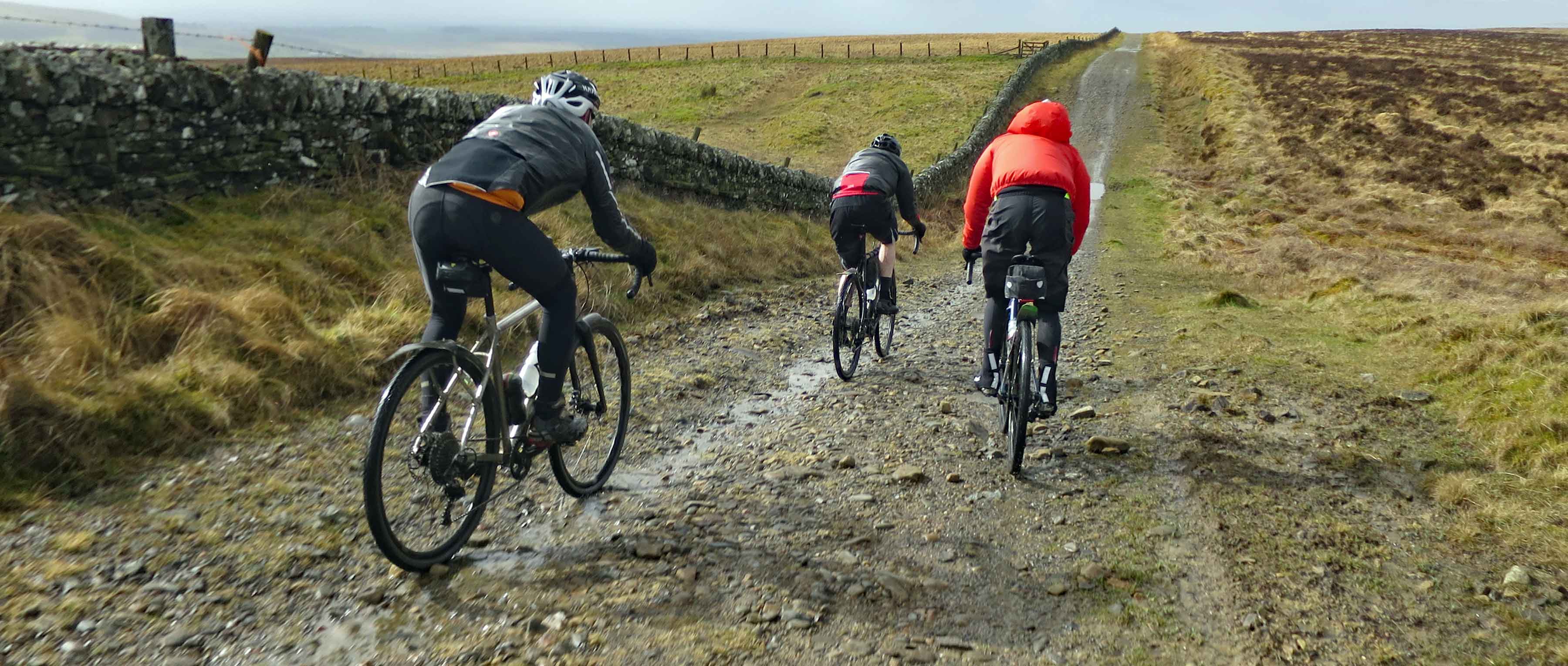
One of the toughest parts of putting together a new gravel riding trip is figuring out how to grade it. Like every cycling holiday company, Skedaddle have a system of grades which they use to give their clients insight into what to expect when they are choosing which trip to book onto. How much climbing will be there be? What is the trail surface like? What skill & fitness level are customers recommended to have to get the most of their holiday? All of this is pretty subjective, but with a combination of experience and discussion among the different staff, a consensus can normally be reached. But conditions on the day can vary enormously. Storms can create new water courses or sections of bog. Farmers can move livestock on a track and deposit loads of mud. Use by motorised vehicles can chew up the surface. All of these things have to be considered in the planning stage of a new gravel riding trip and then carefully explained to potential customers via detailed "trip notes."
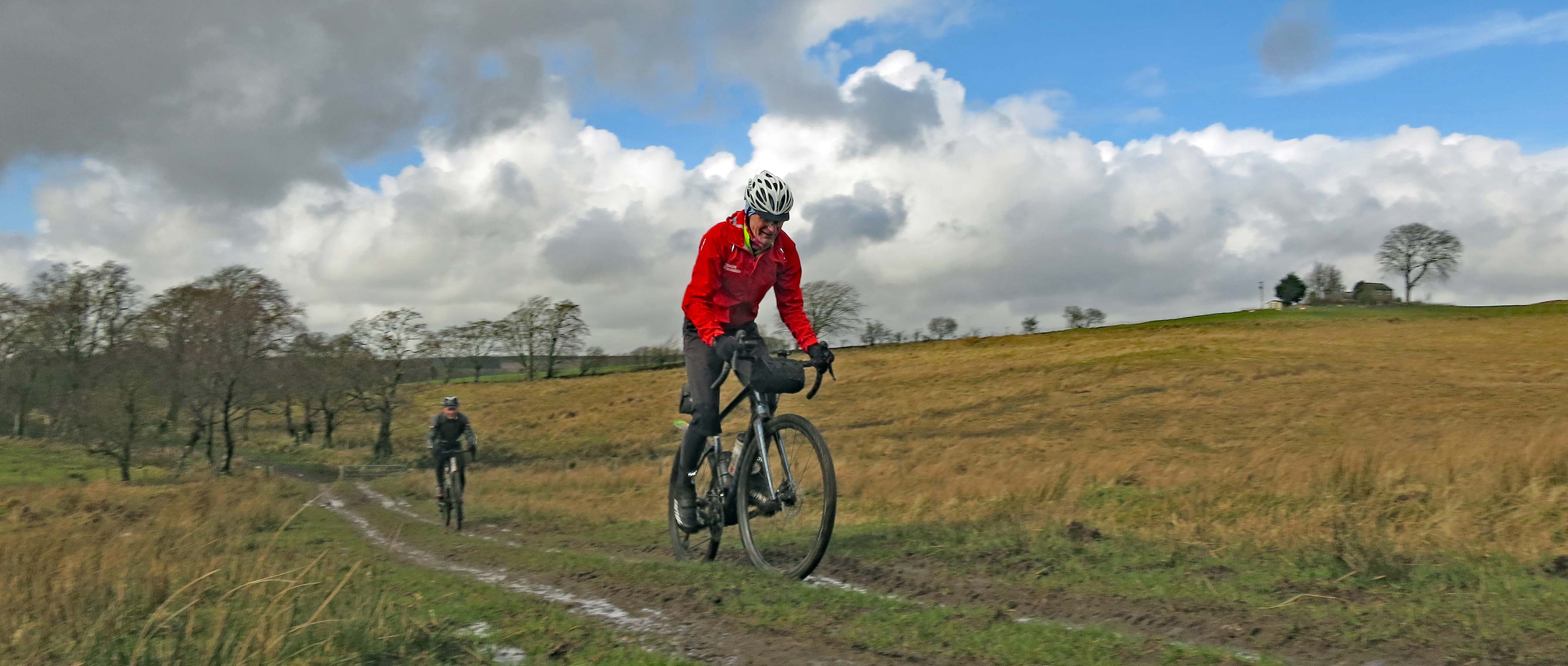
We rode every potential trail option to test them out. Some of them were so fun we were practically bouncing up and down with excitement and some, less so. “According to the Ordnance Survey map, the trail goes straight on here” said Francis at one point. We peered over the wall straight in front of us and could only see a water-filled ditch that ran in a straight line between us and the section of forest that we were aiming for. We double checked the map and it was definitely marked as a vehicle width track. Having already slogged through a deeply hideous section of hub-depth slop just to get to this point, we decided to abandon this section of trail and re-routed back to a nearby minor road instead.
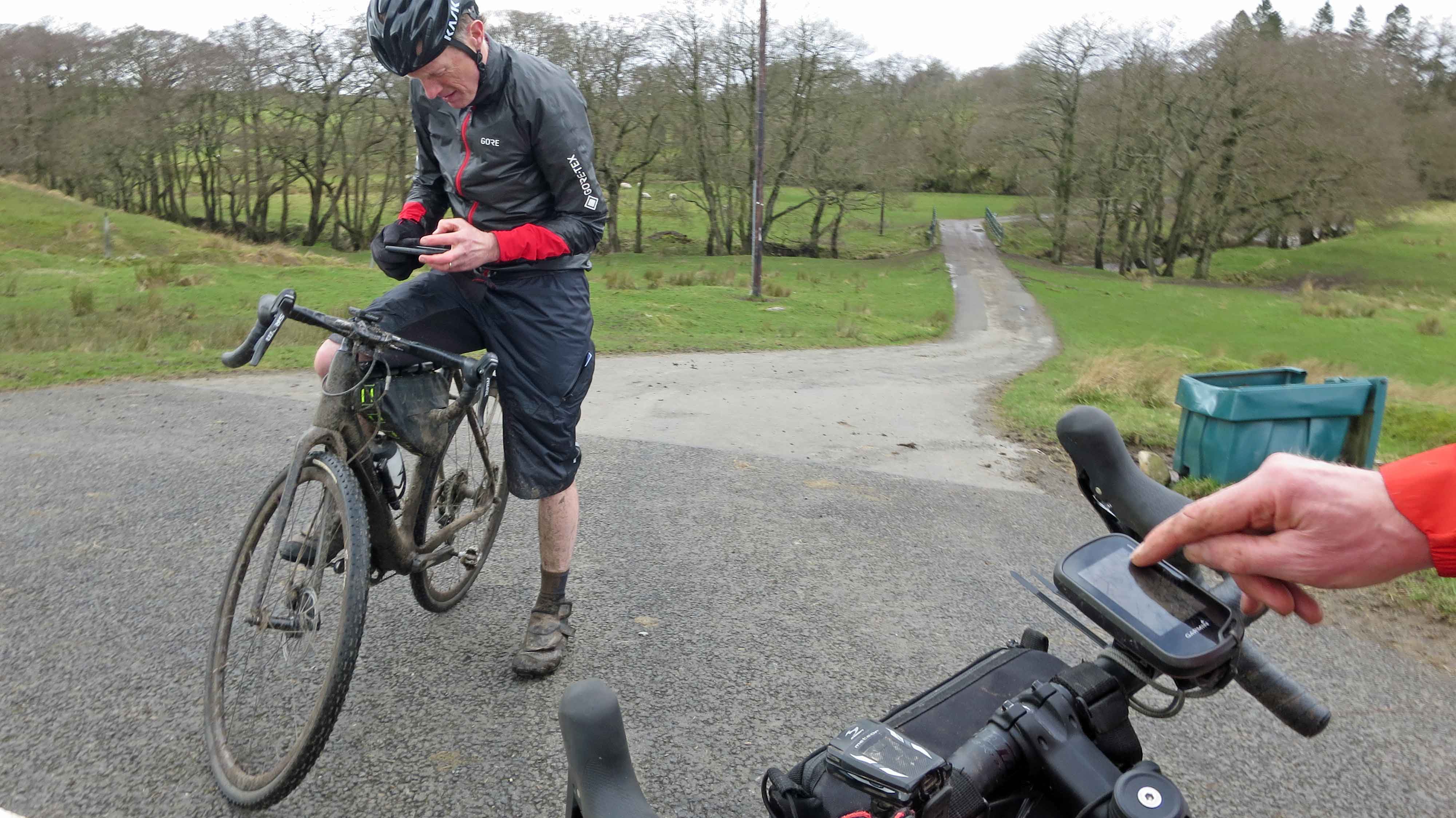
Digital mapping was frequently pored over, often using multiple devices at the same time to try and give us a better picture of what the trail should look like. The problem with this was that it really chewed into our daylight hours. Two very wet sections saw us covering less than 3kms in an hour and burning a heck of a lot of energy in the process. Francis had this is the back of his mind and decided that covering some distance on a tiny, car-free backroad was a much better option for the trip he was planning. Changing the planned route turned out to be a genius move as the road was tiny, tree-lined and the surface was exactly broken up enough to make it fun to ride on a gravel bike. In the Scottish borders, “road” riding doesn’t mean quite the same thing as it might mean elsewhere in the world!
The tarmac section over, we headed back into the forest and split into two pairs to test different options. A now-abandoned section of colour-graded XC MTB trail looked good on the map but ended up being super boggy and required some hike-a-bike to access, so was quickly discounted. Note was made of a screamingly fast gravel road descent, which would need some careful group management by the guides to help get their customers down in one piece during their holiday.
Despite regularly stuffing in energy bars and generous handfuls of Francis’ homemade trail mix, our stomachs were starting to rumble and it was no wonder – we rolled into the sleepy border town of Newcastleton at gone 2pm – quite a lot later than we had anticipated. Some decent pre-ride research meant Francis had identified a great café, which turned out not only to have Scotland’s friendliest host, but also provided exactly the right amount of calories in super quick time.
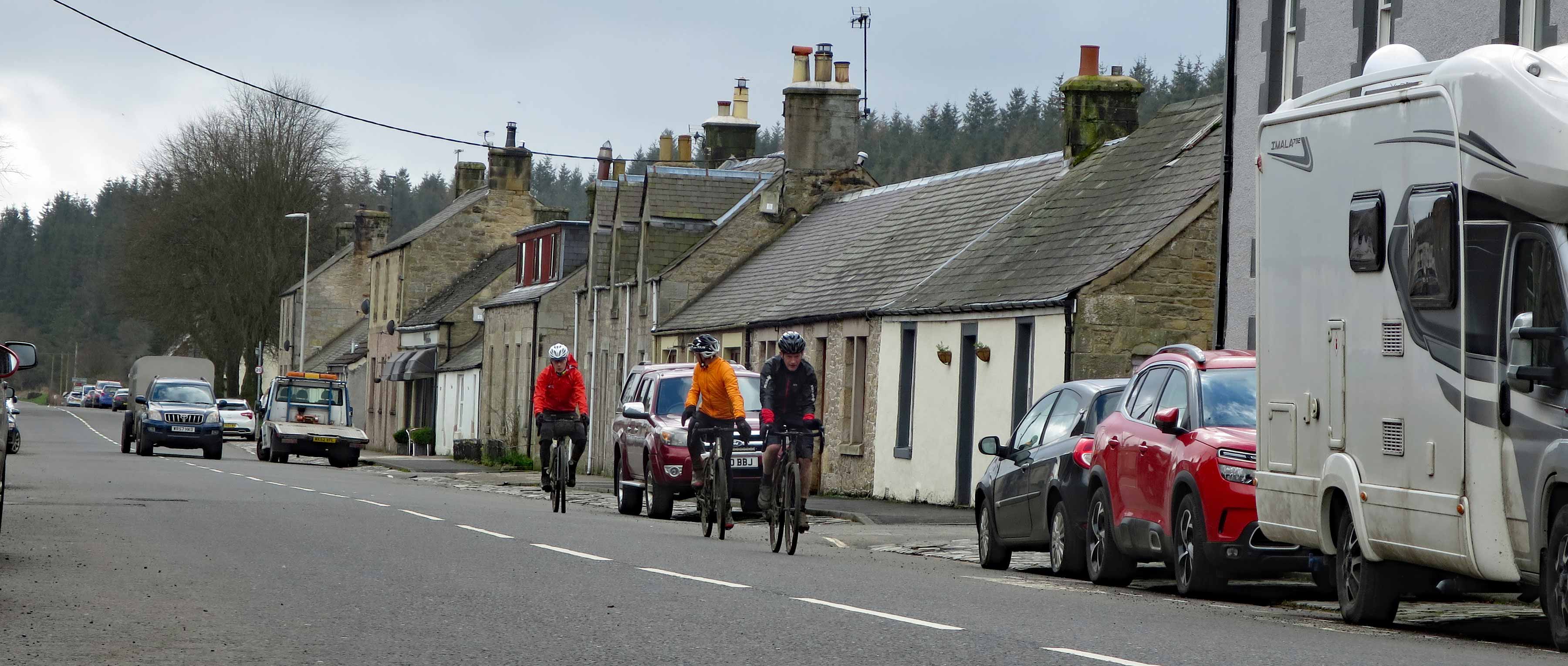
Lunch duly inhaled and weather forecasts checked courtesy of the café’s free wifi (a huge bonus in an area of notoriously poor mobile signal), our energy levels were topped up, but we also knew we were in for an afternoon of torrential rain. Not ideal. We also realised that we were only halfway through the ride and were going to end up finishing in the dark. We headed out of Newcastleton, bound for their waymarked XC MTB trails and a singletrack climb which should have provided the perfect route up to the nearly 500m high Bloodybush border between Scotland and England. The trails gods had other ideas though, as when we arrived at the trailhead it was firmly shut, with a sign telling us that tree felling was taking place and the trail would be closed for another two weeks.
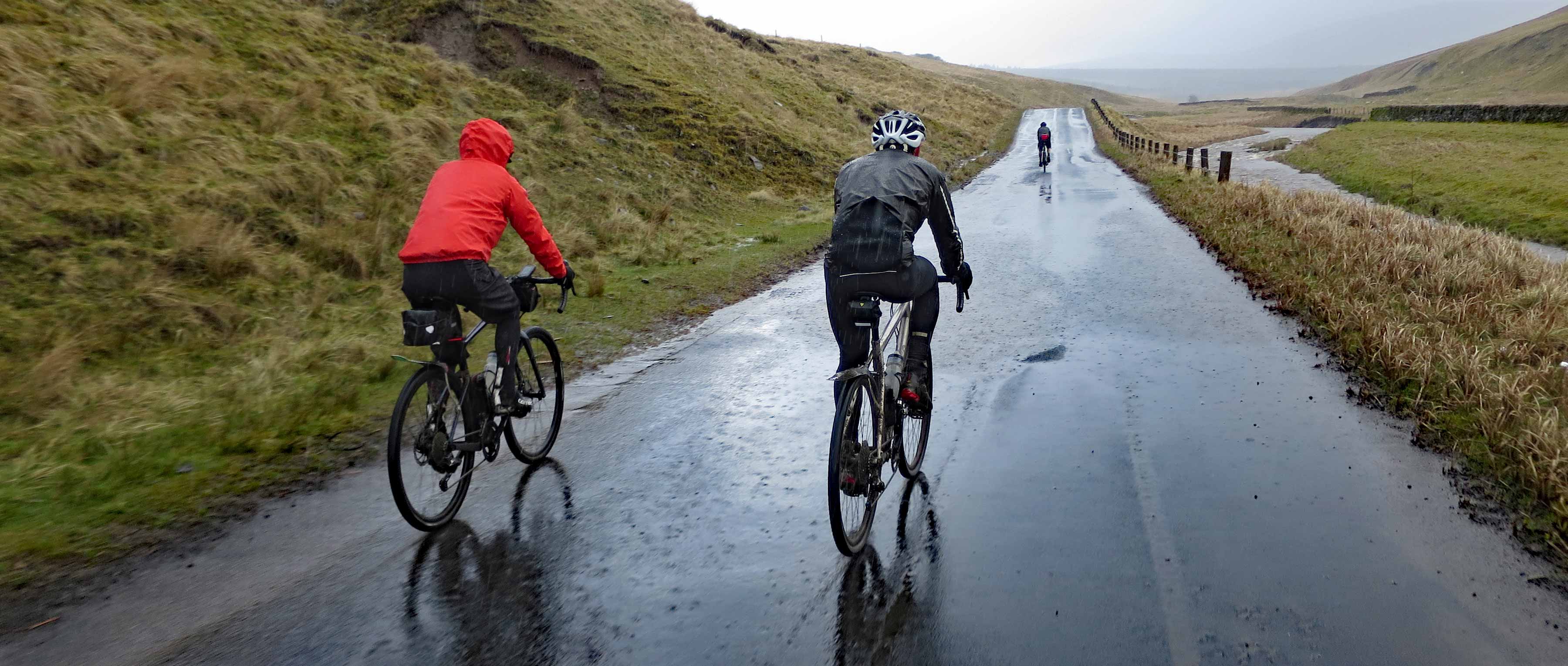
At this point, the howling headwind that we had been battling with was now behind us, but the closed trail meant an unscheduled section of road riding needed to be spliced into our route and we had a date with some pretty ominous looking clouds. As the first rain drops pummelled their way out of the sky, we did a quick emergency stop and donned waterproof jackets. If you do have to go road riding in a torrential rainstorm, then the tiny B-road that runs from Saughtree to Kielder comes highly recommended, but hopefully by the time the first Skedaddle customers test out the Northumberland trip, the MTB trails will have re-opened and everyone will gain height on a beautifully sinuous ribbon of gravelly singletrack instead.
Our spirits were somewhat deflated by the time we reached the English border again, but we knew from there we had only 15kms to ride to get to our next stop, which proved to be Francis’ masterstroke of the ride. As we headed back into England, the rain eased off and we were soon back on drier roads, but as the route changed direction, we probably all did the same mental calculation to figure out that our last climb would be straight into a headwind. As we reached the village of Kielder, we had the option of joining the perfectly graded gravel trail which ran close to the reservoir. But a swift glance at our watches showed what the light levels were already telling us – it was gone 5pm, which meant we had an hour of daylight left, but still had 25kms to cover, the first 10kms of which were climbing. So, we took the less scenic, but significantly faster, road option beside the lake instead.

Kielder forest at 5pm in late winter isn’t necessarily somewhere you’d want to be and certainly not somewhere you might think of finding a warm welcome, but Francis had discovered that the caravan park at Leaplish had a reception area which was open 24hours a day and which promised a hot drinks machine. Considering we probably looked like drowned rats, the staff were unbelievably friendly (despite giving us some disbelieving looks when we explained where we had ridden so far and what we had left to tackle) and the über-sugary hot chocolate was very welcome.
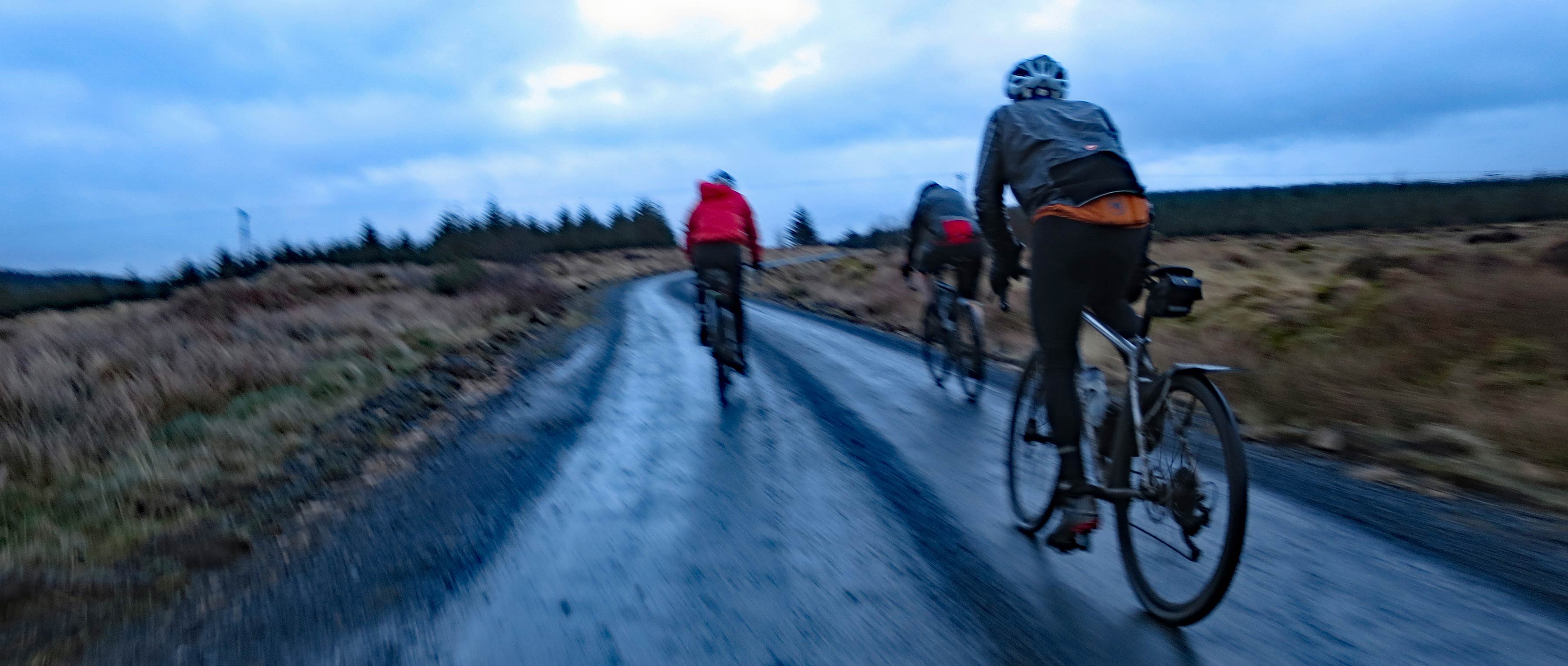
As we dragged ourselves away from the warm reception area and its comfy sofas, the light was fading rapidly and more ominous looking clouds were scudding our direction. It would be fair to say that we were unlikely to have broken any climbing records with our progress up the heavily forested climb that afternoon. Despite the welcome caffeine and sugar hit from our recent stop, there was quite a deep-seated sense of tiredness kicking in. Somehow the combination of the cold, wet, windy weather and the heavy trails had taken a greater toll on our energy levels than the stats from the ride displayed. We managed to stay together as a group and tried to set a pace that would balance the need to keep warm with the dwindling energy levels left in our bodies.

Luckily the gradient of the climb wasn’t too hideous and as we tipped over the first summit, speeds picked up rapidly as we followed the twisting fireroad on towards our final destination. Of course, the combination of tiredness and over-exuberance soon bit us in the bum and Dave shouted that he had punctured. With light levels really dropping, we did some rapid trailside bodging and soon got going again.

The last section back to the van really brought home quite how big a day we had endured. Everyone was pretty cooked, but the combination of adrenaline from the low light, the last vestiges of energy from our drinks stop and the happy realisation that we were nearly finished somehow helped us get to the finish point.
Although a mid-winter ride reccie in appalling weather isn’t really representative of what a cycling guide’s life normally involves, it gave us a good sense of the skills, fitness, enthusiasm and mental acuity required. On the drive home, our energy levels were actually surprisingly high – the heater on full blast and the post-ride calory stuffing helped, but there was also a definite buzz to having not only survived, but actually having had a really fun day on the bike. That post ride-buzz was tangible and it helped us understand a little more what inspired Francis to choose the guiding life as the one for him.
To find out more about Saddle Skedaddle’s new range of gravel riding holidays, head over to their website.